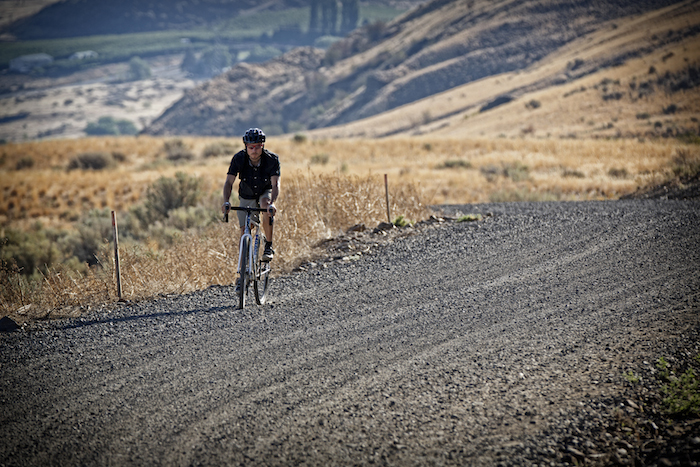
Everything you need to know to head off the pavement and glide over gravel
1. Know Your Opponent
There are 1.4 million miles of gravel and dirt roads in the United States. that’s about one third of all roads in the country.
2. Come Prepared
“A lot of gravel riding takes place far off the beaten path and sometimes out of cell phone range,” says Ira Ryan, an accomplished gravel-road racer and partner at Breadwinner Cycles in Portland, Oregon. Carry these essentials to get out of almost any jam:
- Two spare tubes
- A patch kit
- A pump
- Multi-tool with chain breaker
- Spare chain links
- $20 cash
3. Stay Loose
Gripping your handlebar too tightly makes for a shaky ride. Instead, keep your hands gently secured around your bar top or in the drops. Bend your elbows and knees so they can soak up bumps in the road.
4. Find the Right Bike
You can ride just about any kind of bike on gravel, but models made just for rough surfaces have room for wider tires (a), a relaxed head-tube angle for more predictable steering (b), and a long wheelbase and low bottom bracket for calmer handling (c). Check out our gravel-gobbling Haanjo and Haanjenn series.
5. Maintain Momentum
Shift into a slightly harder gear and crank the pedals. Speed will prevent your tires from slipping and sliding as you pedal across loose or muddy surfaces. Brake early and lightly before corners.
6. Steer Smoothly
Turning your handlebar too sharply can cause your wheel to slide. Instead, twist your hips in the direction you want to go and lean into corners.
7. Sit for Traction
Staying in the saddle keeps your weight centered, which means more traction for your rear wheel. On steep or washed-out grades, shift to a low gear and spin with a high cadence (around 90rpm).
8. Enjoy the View
“Gravel riding will likely take you to places you’ve never seen before,” says Jim Cummins, founder of the Dirty Kanza 200 gravel-road race. “Don’t forget to look up from the road and enjoy your new surroundings.”
9. Tire Tricks
Wider Tires offer better Traction and a softer ride–go as fat as your frame allows. Ryan suggests running the max air pressure recommended on the tire to reduce your chance of pinch flatting, about 90 to 100 psi for most riders.





